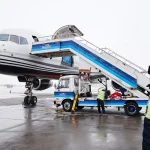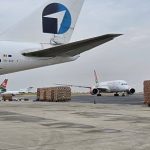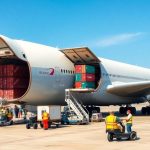Air cargo continues with weak market conditions, according to IATA
The latest figures from IATA have confirmed air cargo continued to face weak market conditions in May.
Data from the airline association show that demand, measured in freight tons kilometers (FTKs), decreased by 3.4% in May compared with the same period in 2018.
This was a slight improvement on the 5.6% contraction in April and IATA said that the low point of this cycle might be behind the sector.
Freight capacity, measured in available freight ton kilometers (AFTKs), rose by 1.3% year-on-year in May 2019 and capacity growth has now outstripped demand increases for 13 months in a row.
IATA said that the air cargo demand has suffered from “very weak global trade volumes and trade tensions between the US and China”.
This has contributed to declining new export orders and the indicator for new manufacturing export orders, part of the global Purchasing Managers Index (PMI), has indicated falling orders since September 2018.
The IATA figures mirror those of analyst WorldACD which reported a 5% year-on-year decline in the chargeable weight of cargo in May.
WorldACD said that the year-on-year decline for May was slightly better than the April figure, but was still behind the figure for the first four months of the year.
IATA director general and chief executive Alexandre de Juniac said: “The impact of the US-China trade war on air freight volumes in May was clear. Year-on-year demand fell by 3.4%.
“It’s evidence of the economic damage that is done when barriers to trade are erected. Renewed efforts to ease the trade tensions coming on the sidelines of the G20 meeting are welcome.
“But even if those efforts are successful in the short-term, restoring business confidence and growing trade will take time. And we can expect the tough business environment for air cargo to continue.”
Looking at regional performance, Asia-Pacific airlines saw demand for airfreight contract by a “hefty” 6.4% in May “as the US-China trade war and weaker manufacturing conditions for exporters in the region have significantly impacted the market”.
North American airlines saw demand decrease by 1.6% year on year in May, which IATA also put down to US-China trade tensions, while capacity was up by 1.4%.
For European airlines there was a 0.2% decrease in freight demand in May, but this is a “significant improvement on the 6.9% contraction in April”. Capacity was up by 2.5% on a year ago.
“Weaker manufacturing conditions for exporters in Germany, indications of a slowing in the regional economy, and ongoing uncertainty over Brexit, have impacted the recent performance,” IATA said.
Middle Eastern airlines’ freight volumes decreased 6.9% with weakening air freight volumes to/from North America and to/from Asia Pacific contributing to the softer performance. Capacity declined by 1.6% on a year earlier.
Latin American airlines experienced an increase in growth in May 2019 of 2.7% on last year but capacity increased by 6.6%.
Finally, African carriers posted the fastest growth of any region during the month with an increase in demand of 8% compared to the same period a year earlier. However, capacity was up by 13.4%.
“This continues the upwards trend in FTKs that has been evident since mid-2018 and makes Africa the strongest performer for the third consecutive month,” IATA said.














